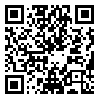Volume 11, Issue 2 (7-2011)
Iranian Journal of Medical Education 2011, 11(2): 84-93 |
Back to browse issues page
Download citation:
BibTeX | RIS | EndNote | Medlars | ProCite | Reference Manager | RefWorks
Send citation to:



BibTeX | RIS | EndNote | Medlars | ProCite | Reference Manager | RefWorks
Send citation to:
Shakurnia A. Faculty Attitudes Towards Student Ratings: Do The Student Rating Scores Really Matter?. Iranian Journal of Medical Education 2011; 11 (2) :84-93
URL: http://ijme.mui.ac.ir/article-1-1740-en.html
URL: http://ijme.mui.ac.ir/article-1-1740-en.html
Department of Immunology, Medical School, Ahwaz Jundishapur University of Medical Sciences, Ahwaz, Iran , shakurnia@yahoo.com
Abstract: (11785 Views)
Faculty Attitudes Towards Student Ratings: Do the Student Rating Scores Really Matter? Abdolhussein Shakurnia1 Abstract Introduction: Survey on faculty attitudes towards student ratings can reveal the strengths and weaknesses of faculty evaluation and be considered as an effective measure leading to higher quality. The purpose of this study was to investigate the effect of faculty evaluation scores by students on the faculty attitudes towards student ratings in Ahwaz Jundishapur University of Medical Sciences (AJUMS). Methods: This cross-sectional study was performed in Ahwaz Jundishapur University of Medical Sciences. The population under study was all non-clinical faculty members and all students. The data was gathered using two instruments: the attitudes towards student ratings of instruction questionnaire and the student ratings of instruction questionnaire. Data was analyzed by SPSS-15 software, t-student and Spearman correlation test. Results: There was a significant difference between the mean scores of low-rated and high-rated faculty attitudes towards student ratings (2.98±0.45 vs. 3.45±0.38, p<0.001). The ranges of the attitude scores of the low and high-rated faculties were 2.42-3.79 and 2.23-4.55, respectively. Conclusion: The results indicate that there is a statistically significant difference in attitudes of faculty towards this form of evaluation between the low and high rated faculty. It is obvious that the faculty with high rating scores have more positive attitudes toward student ratings. Keywords: Faculty evaluation, Student ratings, Faculty attitudes, Evaluation scores Addresses: 1 ()Instructor, Department of Immunology, Medical School, Ahwaz Jundishapur University of Medical Sciences, Ahwaz, Iran. E- mail: shakurnia@yahoo.com
Type of Study: Original research article |
Subject:
Teacher Evaluation
Received: 2011/08/10 | Accepted: 2011/08/10 | Published: 2011/07/15 | ePublished: 2011/07/15
Received: 2011/08/10 | Accepted: 2011/08/10 | Published: 2011/07/15 | ePublished: 2011/07/15
Send email to the article author
| Rights and permissions | |
 |
This work is licensed under a Creative Commons Attribution-NonCommercial 4.0 International License. |




